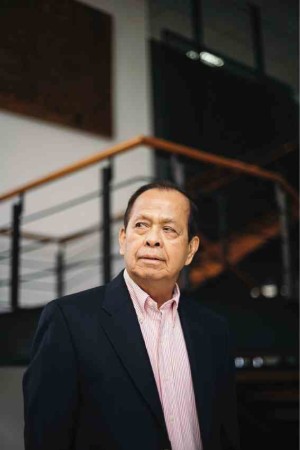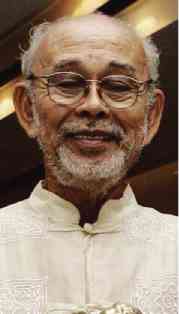Napoleon Abueva
Dubbed the Father of Modern Philippine Sculpture, he was awarded National Artist for Sculpture in 1976 and is known for utilizing almost all kinds of medium in his works. Abueva’s other works are “The Transfiguration” in Eternal Gardens Memorial Park, “Nine Muses” and “UP Gateway” in the University of the Philippines-Diliman and murals in marble at the National Heroes Shrine in Bataan.
Ed Castrillo

He is the builder of some of the most familiar sculptures and monuments nationwide, which made use of brass and metal fashioned into abstract forms. Some of Castrillo’s works were the “Spirit of Pinaglabanan” in San Juan, “Bonifacio and the Katipunan Revolution” near the Manila City Hall and the Cebu Heritage Monument.
William Coscolluela

Considered one of the pillars of Philippine architecture, he has practiced for over five decades and has advocated green growth and other environmentally-sound ideas and practices. Among the works of his architectural firm, include SM Aura Premier and SM Seaside Cebu, Tagaytay Highlands Family Clubhouse, Iloilo Convention Center and World Trade Center.
Leandro Locsin
Awarded National Artist for Architecture in 1990, Locsin claimed that Philippine architecture is “the product of two great streams of culture, the oriental and the occidental… to produce a new object of profound harmony.” Among his famous works were the Cultural Center of the Philippines Complex and the Istana Nurul Iman, the palace of the Sultan of Brunei which has a floor area of 2.2 million square feet.
Francisco “Bobby” Mañosa
A champion of Filipino architecture, he believes that architecture had to be true to its country and its people, that culture had to determine the final form of a building and that local materials were best for local conditions. His famous works include the Coconut Palace in Pasay, the San Miguel Corp. headquarters in Pasig, and the Amanpulo Resort in Palawan, among other projects.
Ramon Orlina
He is a multi-awarded glass sculptor whose works commonly feature abstract forms with sharp edges and sleek bends to denote movement and fluid lines. His multi-dimensional sculptures allow them to be viewed from any point of view and to be interpreted beyond the artist’s intended form.
—Compiled by Rafael L. Antonio,
Inquirer Research (Sources: ncca.gov.ph, wvcarchitects.com,
orlina.com and Inquirer Archives)


